This resource collection includes government and OSEP-funded TA Center documents, websites, and tools related to the use of data to support state Part C child find efforts. These resources can be used to aid in the reporting and analysis of child find data to support states to develop a comprehensive and effective child find system.
How to Collect and Report Data
 Part C Child Find Self-Assessment: Quick Start GuideThe Part C Child Find Self-Assessment: Quick Start Guide, developed by DaSy and ECTA, is designed to help state leaders consider common areas of need and challenges related to Child ...Read more
Part C Child Find Self-Assessment: Quick Start GuideThe Part C Child Find Self-Assessment: Quick Start Guide, developed by DaSy and ECTA, is designed to help state leaders consider common areas of need and challenges related to Child ...Read more Child Find Self-AssessmentThe Child Find Self-Assessment (CFSA) is a valuable tool for State IDEA Part C programs seeking to improve their child find efforts. Developed by the Office of Special Education Programs ...Read more
Child Find Self-AssessmentThe Child Find Self-Assessment (CFSA) is a valuable tool for State IDEA Part C programs seeking to improve their child find efforts. Developed by the Office of Special Education Programs ...Read more Part C Measurement TableThe Part C Measurement Table outlines the Part C SPP/APR reporting requirements for all indicators, including Indicator C5 (Child Find, Ages Birth to 1) and Indicator C6 (Child Find, Ages ...Read more
Part C Measurement TableThe Part C Measurement Table outlines the Part C SPP/APR reporting requirements for all indicators, including Indicator C5 (Child Find, Ages Birth to 1) and Indicator C6 (Child Find, Ages ...Read more EMAPS User Guide: IDEA Part C Child Count and SettingsThis guide demonstrates the steps necessary to enter and navigate the IDEA Part C Child Count and Settings data in EMAPS. The EMAPS IDEA Part C Child Count and Settings ...Read more
EMAPS User Guide: IDEA Part C Child Count and SettingsThis guide demonstrates the steps necessary to enter and navigate the IDEA Part C Child Count and Settings data in EMAPS. The EMAPS IDEA Part C Child Count and Settings ...Read more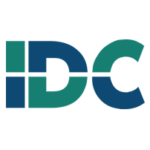 Back-to-Basics on Part C Child Find—What You Need to Know About Indicators C5 and C6This webinar continued the IDEA Data Center’s (IDC) Back-to-Basics Webinar Series for new Part C state staff, staff with new indicator responsibilities, and those who wanted a refresher on ins-and-outs ...Read more
Back-to-Basics on Part C Child Find—What You Need to Know About Indicators C5 and C6This webinar continued the IDEA Data Center’s (IDC) Back-to-Basics Webinar Series for new Part C state staff, staff with new indicator responsibilities, and those who wanted a refresher on ins-and-outs ...Read more
State Reported Data on Children Served in Part C
 Part C & 619 Data DisplaysThe U.S. Department of Education houses user-friendly displays of each SPP/APR on the GRADS360 website. These data displays include historical data, targets, and annual data for several fiscal years for ...Read more
Part C & 619 Data DisplaysThe U.S. Department of Education houses user-friendly displays of each SPP/APR on the GRADS360 website. These data displays include historical data, targets, and annual data for several fiscal years for ...Read more Annual Report to Congress on the Implementation of the Individuals with Disabilities Education ActThe U.S. Department of Education’s Office of Special Education Programs (OSEP) submits an annual report to Congress on the implementation of the Individuals with Disabilities Education Act (IDEA). The Annual ...Read more
Annual Report to Congress on the Implementation of the Individuals with Disabilities Education ActThe U.S. Department of Education’s Office of Special Education Programs (OSEP) submits an annual report to Congress on the implementation of the Individuals with Disabilities Education Act (IDEA). The Annual ...Read more IDEA Section 618 Data Products: Static Tables – Part C Child Count and SettingsSection 618 of the Individuals with Disabilities Education Act (IDEA) requires that each state submit data about the infants, toddlers, and children with disabilities age birth to 21 years who ...Read more
IDEA Section 618 Data Products: Static Tables – Part C Child Count and SettingsSection 618 of the Individuals with Disabilities Education Act (IDEA) requires that each state submit data about the infants, toddlers, and children with disabilities age birth to 21 years who ...Read more IDEA Section 618 Child Find Data Products: State Level Data FilesSection 618 of the Individuals with Disabilities Education Act (IDEA) requires that each state submit data about the infants, toddlers, and children with disabilities age birth to 21 years who ...Read more
IDEA Section 618 Child Find Data Products: State Level Data FilesSection 618 of the Individuals with Disabilities Education Act (IDEA) requires that each state submit data about the infants, toddlers, and children with disabilities age birth to 21 years who ...Read more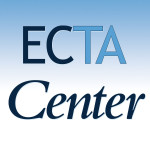 States’ and Territories’ Definitions of/Criteria for IDEA Part C EligibilityThis table summarizes states’ and territories’ definitions of/criteria for IDEA Part C eligibility. It includes states’ web links to the definitions/criteria, level of developmental delay required for eligibility, and whether ...Read more
States’ and Territories’ Definitions of/Criteria for IDEA Part C EligibilityThis table summarizes states’ and territories’ definitions of/criteria for IDEA Part C eligibility. It includes states’ web links to the definitions/criteria, level of developmental delay required for eligibility, and whether ...Read more Part C SPP/APR Indicator AnalysesThe Part C Indicator Analyses on State submitted SPP/APRs by FFY provides a national picture of the implementation of Part C of the Individuals with Disabilities Act (IDEA). Birth to ...Read more
Part C SPP/APR Indicator AnalysesThe Part C Indicator Analyses on State submitted SPP/APRs by FFY provides a national picture of the implementation of Part C of the Individuals with Disabilities Act (IDEA). Birth to ...Read more ITCA Child Count Data ChartsITCA categorizes state eligibility criteria into three groups based on the breadth of the criteria. For a given year, these ITCA Child Count Data Charts provide the percentages of children ...Read more
ITCA Child Count Data ChartsITCA categorizes state eligibility criteria into three groups based on the breadth of the criteria. For a given year, these ITCA Child Count Data Charts provide the percentages of children ...Read more
Using State Data to Explore Child Find Practices
 Part C Child Find Self-Assessment: Quick Start GuideThe Part C Child Find Self-Assessment: Quick Start Guide, developed by DaSy and ECTA, is designed to help state leaders consider common areas of need and challenges related to Child ...Read more
Part C Child Find Self-Assessment: Quick Start GuideThe Part C Child Find Self-Assessment: Quick Start Guide, developed by DaSy and ECTA, is designed to help state leaders consider common areas of need and challenges related to Child ...Read more Child Find Self-AssessmentThe Child Find Self-Assessment (CFSA) is a valuable tool for State IDEA Part C programs seeking to improve their child find efforts. Developed by the Office of Special Education Programs ...Read more
Child Find Self-AssessmentThe Child Find Self-Assessment (CFSA) is a valuable tool for State IDEA Part C programs seeking to improve their child find efforts. Developed by the Office of Special Education Programs ...Read more Part C Child Find Funnel Chart ToolThe Child Find Funnel Chart tool is an Excel template for displaying data about infants and toddlers at each step of the Part C process, from referral through exit, for ...Read more
Part C Child Find Funnel Chart ToolThe Child Find Funnel Chart tool is an Excel template for displaying data about infants and toddlers at each step of the Part C process, from referral through exit, for ...Read more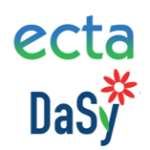 Identifying Meaningful Differences in Child FindThis Excel-based calculator allows states to make several comparisons related to the percentage of infants and toddlers served: State percentage compared to state target, local program percentage compared to state ...Read more
Identifying Meaningful Differences in Child FindThis Excel-based calculator allows states to make several comparisons related to the percentage of infants and toddlers served: State percentage compared to state target, local program percentage compared to state ...Read more Local Contributing Factor Tool for SPP/APR Results Indicators C-2, C-4, C-5, C-6The purpose of this document is to provide ideas for the types of questions state and local teams may consider in identifying factors impacting performance on Indicators C5 and C6. ...Read more
Local Contributing Factor Tool for SPP/APR Results Indicators C-2, C-4, C-5, C-6The purpose of this document is to provide ideas for the types of questions state and local teams may consider in identifying factors impacting performance on Indicators C5 and C6. ...Read more
Using Data to Improve Identification of Specific Populations
 Part C Child Find Self-Assessment: Quick Start GuideThe Part C Child Find Self-Assessment: Quick Start Guide, developed by DaSy and ECTA, is designed to help state leaders consider common areas of need and challenges related to Child ...Read more
Part C Child Find Self-Assessment: Quick Start GuideThe Part C Child Find Self-Assessment: Quick Start Guide, developed by DaSy and ECTA, is designed to help state leaders consider common areas of need and challenges related to Child ...Read more Child Find Self-AssessmentThe Child Find Self-Assessment (CFSA) is a valuable tool for State IDEA Part C programs seeking to improve their child find efforts. Developed by the Office of Special Education Programs ...Read more
Child Find Self-AssessmentThe Child Find Self-Assessment (CFSA) is a valuable tool for State IDEA Part C programs seeking to improve their child find efforts. Developed by the Office of Special Education Programs ...Read more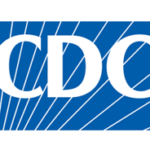 Annual Data Early Hearing Detection and Intervention (EHDI) ProgramThis annual report includes national summaries by year, and summaries by jurisdictions for key data items, including, screening, diagnosis, and enrollment in early intervention. There are three “Early Intervention Data” summaries ...Read more
Annual Data Early Hearing Detection and Intervention (EHDI) ProgramThis annual report includes national summaries by year, and summaries by jurisdictions for key data items, including, screening, diagnosis, and enrollment in early intervention. There are three “Early Intervention Data” summaries ...Read more The National Child Abuse and Neglect Data System (NCANDS)This is a voluntary data collection system that gathers information from all 50 states, the District of Columbia, and Puerto Rico about reports of child abuse and neglect. The data ...Read more
The National Child Abuse and Neglect Data System (NCANDS)This is a voluntary data collection system that gathers information from all 50 states, the District of Columbia, and Puerto Rico about reports of child abuse and neglect. The data ...Read more Identifying Specific Disabilities and Children At-RiskThis collection is organized by disability and other special populations (e.g., abuse and neglect) and provides information about a range of topics including incidence levels, identification, assessment, outcomes, and other ...Read more
Identifying Specific Disabilities and Children At-RiskThis collection is organized by disability and other special populations (e.g., abuse and neglect) and provides information about a range of topics including incidence levels, identification, assessment, outcomes, and other ...Read more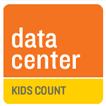 KIDS Count State DataThis interactive website for KIDS Count, a project through the Annie E. Casey Foundation, provides ten years of data on child well-being nationally and in each of the 50 states, ...Read more
KIDS Count State DataThis interactive website for KIDS Count, a project through the Annie E. Casey Foundation, provides ten years of data on child well-being nationally and in each of the 50 states, ...Read more National Birth Defects Prevention Network (NBDPN) State ProfilesIn 2012, the National Birth Defects Prevention Network (NBDPN) created a state profile template that includes state and national data on the number of cases and prevalence rates for 12 ...Read more
National Birth Defects Prevention Network (NBDPN) State ProfilesIn 2012, the National Birth Defects Prevention Network (NBDPN) created a state profile template that includes state and national data on the number of cases and prevalence rates for 12 ...Read more
Published April 2018.

